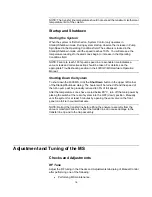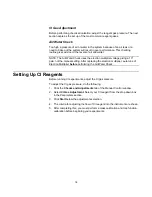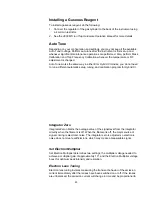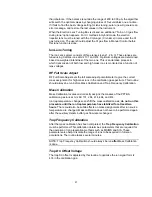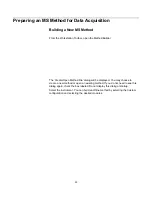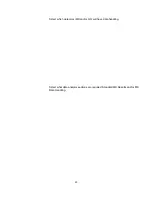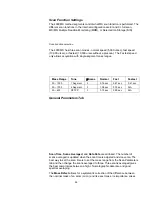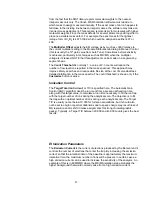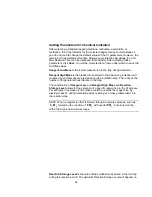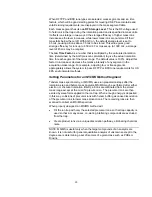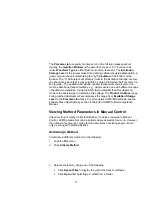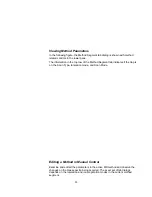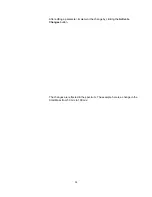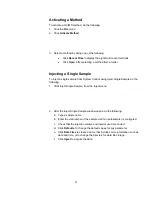
30
When DFTPP and BFB tune types are selected, mass segments and ion time
factors, which will be good starting points for meeting US EPA semivolatile and
volatile tuning requirements, are displayed in the mass segment table.
Each mass segment has its own
RF Storage Level
. This is the RF voltage used
to hold ions in the trap during the ionization period and is specified in mass units.
It affects ion storage in two ways C the storage efficiency of higher mass ions
increases as the level increases, while lower mass ions are not stored if their
mass falls below the cutoff. With AGC on, the default storage level is set to
35 m/z, causing all ions above 35 m/z to be stored. This value gives good
storage efficiency for ions up to 650 m/z. For masses up to 1000 m/z, a storage
level of 45 m/z may be required.
The
Ion Time Factor
is a number that is multiplied by the calculated ionization
time (determined by the AGC pre-scan calculation) to give the actual ionization
time for each segment of the mass range. The default value is 100%. Adjust this
factor to increase or decrease the relative intensity of any segment in the
acquisition mass range. For example, adjusting four or five segments
appropriately allows the system to pass DFTPP or BFB tune requirements for US
EPA environmental methods.
Setting Parameters for an MS/MS Method Segment
Tandem mass spectrometry, or MS/MS, uses ion preparation steps after the
ionization step and before mass analysis. MS/MS may be performed after either
electron or chemical ionization. Briefly, all ions are eliminated from the stored
mass range except at the m/z of a precursor ion. The precursor ions are then
excited by waveforms applied to the ion trap. When enough energy is deposited
in this way, collisions of precursor ions with helium buffer gas cause dissociation
of the precursor ions to lower mass product ions. The remaining ions are then
scanned to collect an MS/MS spectrum.
When properly designed, an MS/MS method will:
•
Fill the ion trap with only the selected precursor ions, so that trap capacity is
used so that in many cases, co-eluting interfering compounds are excluded
from the trap.
•
Create product ions via a unique dissociation pathway, eliminating chemical
noise.
NOTE: MS/MS is useful only when the target compounds of an analysis are
known. It is not useful for general qualitative analysis of unknowns except to the
degree one is determining a set of isomers of a given class such as PCBs or
Dioxins.
Содержание 4000 MS
Страница 2: ......

